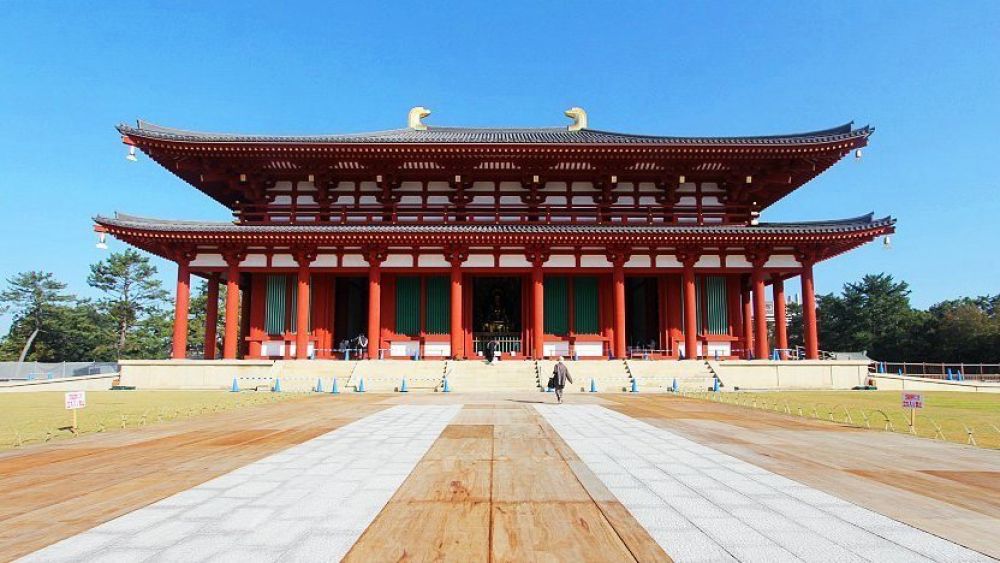

Kofukuji Temple, located in the heart of Nara, Japan, is an integral part of Japan's cultural heritage and a significant monument in the history of Japanese Buddhism. Established in 669 CE by Kagami-no-Ōkimi, the temple was originally built in Yamashina, Kyoto and later moved to Nara in 710 at the behest of the Fujiwara clan, one of the most powerful clans during the Nara and Heian periods.
As Nara became the first permanent capital of Japan in 710, Kofukuji Temple rapidly grew in importance, both spiritually and politically. The temple's affiliation with the Fujiwara clan enhanced its status, allowing it to amass wealth and a collection of sacred Buddhist texts and art. The Five-story Pagoda, one of the temple's most renowned structures, has stood as a symbol of Nara and is considered the second tallest wooden pagoda in Japan. The temple's historical significance and its treasures attracted pilgrims and scholars over centuries, establishing its role as a cornerstone for early tourism in Nara.
With the Meiji Restoration of 1868 and the subsequent modernization of Japan, Nara and Kofukuji Temple faced new waves of domestic and international tourists. Interest in Japan's ancient capital and its historical monuments grew, particularly after the establishment of national railway networks. Kofukuji Temple, along with other ancient Nara sites, became a must-visit destination for those interested in Japanese history and culture.
In the aftermath of World War II, Japan focused on rebuilding its cultural landmarks and promoting them to rejuvenate tourism. Kofukuji Temple benefited from these efforts as more people sought to reconnect with Japan's past. The temple complex was designated part of the "Historic Monuments of Ancient Nara," which were collectively recognized as a UNESCO World Heritage Site in 1998. This prestigious honor catapulted Kofukuji and Nara back into the global spotlight and revitalized its status as a prime location for cultural tourism.
Today, Kofukuji Temple stands out as a testament to Japanese history, art, and architecture, attracting millions of visitors each year. The temple grounds host a diverse array of structures, including the five-storied pagoda, the three-storied pagoda, and the National Treasure Museum, which houses an impressive collection of Buddhist statuary, including the Ashura statue, one of the most beloved national treasures of Japan.
In recent years, tourism at Kofukuji Temple has embraced the digital age, with the introduction of augmented reality experiences and English-language apps to enhance visitors' understanding of the site's history. Efforts to preserve and showcase the temple's cultural artifacts have been complemented by contemporary museum exhibits and interactive tours. Additionally, Kofukuji Temple and the Nara region have seen a surge in eco-cultural tourism, with an emphasis on sustainability and mindful travel experiences.
Kofukuji Temple's history as a center of tourism is as long and varied as the history of Japan itself. From its early days as a spiritual nexus for pilgrims to its current status as a world heritage site and cultural attraction, Kofukuji Temple continues to be an enduring symbol of Nara's historic significance and a beloved destination for visitors from around the globe.